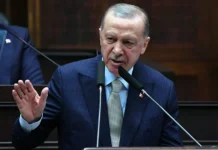Prime Minister Benjamin Netanyahu’s Likud party continues to lead in political polls ahead of the general Knesset election on April 9.
A Channel 12 News poll projected 32 sets for the Likud, compared to 14 for Yesh Atid and 13 for former IDF chief of staff Benny Gantz’s Israel Resilience Party.
The poll predicted that Habayit Hayehudi, now under the leadership of MK Bezalel Smotrich, would not pass the minimum electoral threshold of 3.25%.
The poll predicted six seats for the Joint Arab List and four seats each for Finance Minister Moshe Kahlon’s Kulanu party and MK Orly Levy-Abekasis’ Gesher party, which barely lifts them over the minimum electoral threshold and into the Knesset.
According to Channel 12, the parties led by former Shas head Eli Yishai (Yachad), former Zionist Union co-chairwoman Tzipi Livni (Hatnuah), and former Defense Minister Moshe Ya’alon (Telem), would not pass the minimum electoral threshold.
Channel 12 used a representative sample of 1,007 Israelis age 18 and over and has a margin of error of 3.1%
A poll conducted by Kan 11 News showed similar, albeit not identical, trends.
Kan 11 projected 31 seats for Likud, 13 for Gantz’s Israel Resilience party, and 10 seats for Yesh Atid.
Labor made an even worse showing in the Kan 11 poll, winning a mere seven seats.
The poll also projected seven seats for the New Right, six for Kulanu, six for Gesher, five each for Meretz and Shas, and four seats each for Yisrael Beytenu, Hatnuah, and Habayit Hayehudi.
Each party running for the Knesset compiles a list of 120 potential Knesset members. The number of representatives of each party who actually wind up serving in the Knesset is based on the percentage of the vote the party gets in a Knesset election. The minimum electoral threshold required to enter the Knesset is 3.25% of the vote, meaning that the fewest MKs a given party can have in the Knesset is four.
The rules for determining Knesset lists vary from party to party, but most of the major parties allow leaders to reserve spots for specific representatives or representatives of specific sectors (women, minorities, immigrants).


























